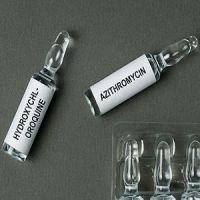The most common manifestation of COVID-19 has been respiratory illness with a growing recognition of neurological sequelae. In this recent review, researchers take into consideration the neurological features of COVID-19 and summarise the evidence available to suggest an investigation framework to guide future studies.
Before COVID-19, there were six other coronaviruses known to infect humans and cause respiratory pathology. Of these, severe acute respiratory syndrome (SARS-CoV) and the Middle East Respiratory Syndrome (MERS) have been associated with diseases of the central (CNS) and peripheral nervous system (PNS). SARS-CoV was associated with 0.04% CNS and 0.05% PNS complications, and MERS was associated with 0.20% CNS and 0.16% PNS complications.
If the relatively low prevalence of these viruses is extrapolated to the 4.8 million COVID-19 cases, these numbers rise up to 1805-9671 for CNS and 2407-7737 for PNS complications.
Clinical features of COVID-19-associated neurological disease
In one national registry of 125 patients, 39 (31%) patients had altered mental status, of which 13% was due to encephalopathy. About 18% were diagnosed with various neuropsychiatric conditions such as psychosis (8%), neurocognitive syndrome (5%) and affective disorders (3%). More than half (62%) of patients had a cerebrovascular event, including ischaemic strokes (46%), intracerebral hemorrhages (7%), and CNS vasculitis (1%).
Encephalitis
As of May 19, 2020, encephalitis has been diagnosed in 8 adults, including four women aged between 24–78 years. With the exception of one 60-year-old man whose confusion preceded respiratory signs, most patients exhibited neurological features such as irritability, confusion, reduced consciousness, neck stiffness after the onset of respiratory symptoms. One 40-year-old man developed bilateral facial weakness, hiccups, and oscillopsia.
Acute disseminated encephalomyelitis and myelitis
Two middle-aged women have been diagnosed with acute disseminated encephalomyelitis. One case developed encephalopathy nine days after the onset of myalgia and headache. The second case experienced reduced consciousness as well as seizures and required respiratory support. So far, only one case of myelitis has been diagnosed in a 66-year-old man in Wuhan, China. They were all treated with the help of steroids and immunoglobulins and experienced improvement.
Peripheral nervous system and muscle disease
As of now, 19 patients between 23-77 years, including six females, have been diagnosed with Guillain-Barré syndrome or its variants. The onset of neurological symptoms ranged between 7-24 days, with 7 days as a median. Of these, 11 patients had weakness in all four limbs, 3 had leg weakness only, 1 had lower limb paraesthesia, 4 had facial nerve involvement, 5 had dysphagia, and 8 developed respiratory failure. Two patients were diagnosed with the Miller Fisher variant of GBS.
Cerebrovascular manifestations
In a retrospective case series of 221 patients from Wuhan, 6% had cerebrovascular manifestations, and 5% had experienced an ischaemic stroke.
Conclusions
There is not enough detail available on cases to establish whether COVID-19 is directly responsible for the neurological features of COVID-19 patients and how best to distinguish it from complications caused by the virus. More studies are required to better understand the burden of neurological disease and what its social and economic costs will be to the world.
Source: The Lancet
Image Credit: iStock



























